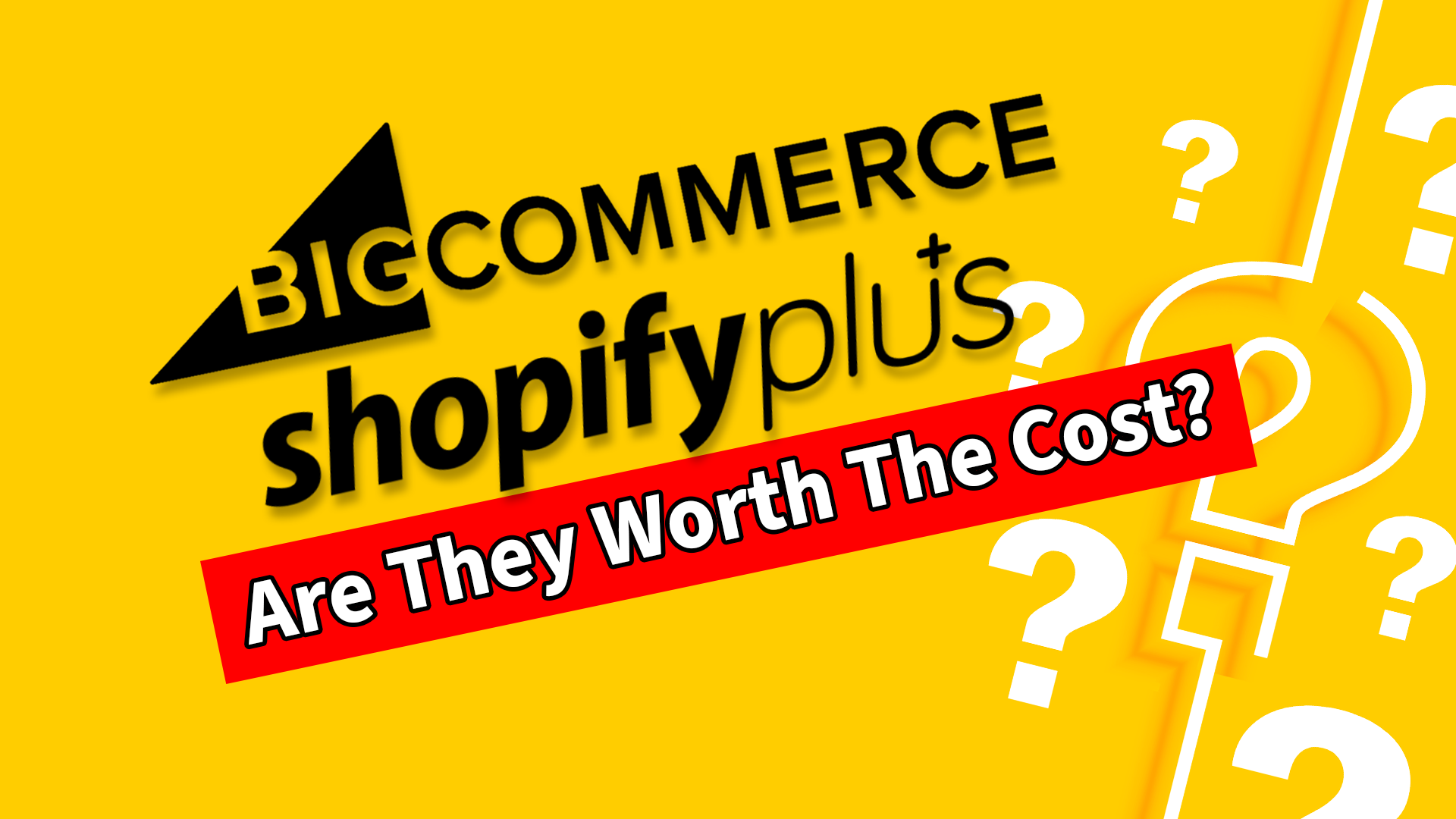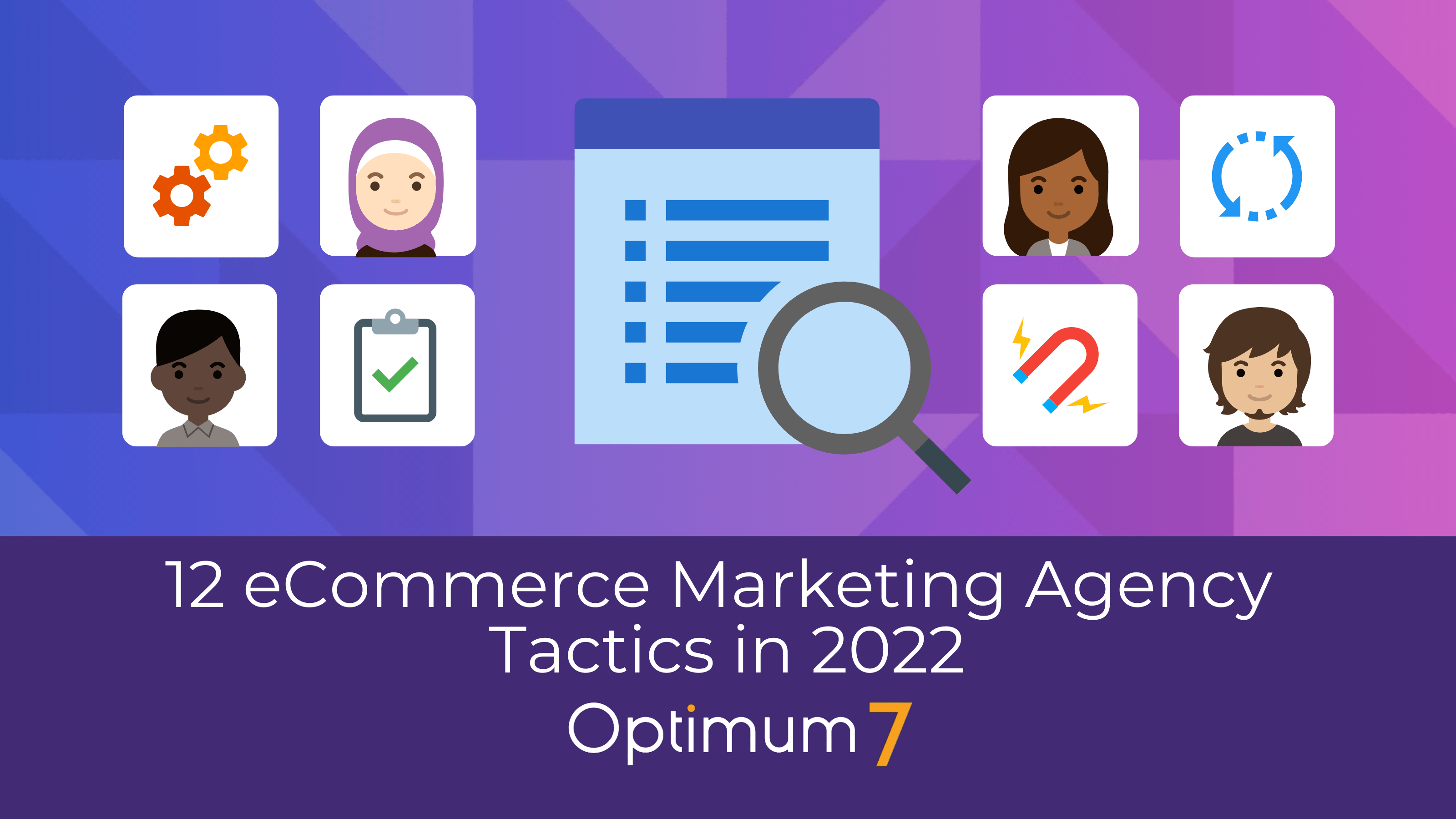We receive several calls every day from people frustrated with their current shopping cart on their websites. Typically, these issues are fairly easy to fix, so we tell them what they need to know or guide them to the right forums, they get their problem fixed, and move on. Other times, we get calls from people that have just had it with their current eCommerce solution and just want out. The technology is outdated and not user friendly, they want custom functionality that their current solution doesn’t support, or they are simply looking to switch to something more modern and scalable.
The fact is that for many of you, your website IS your business, so a change like this is not something that can be taken lightly. I would like to take you through Optimum7’s logic and process of how to migrate an eCommerce store from one platform to another; this is what you need to pay attention when making this decision.
During this kind of project, we analyze the following:
- Your Business Model – How the current shopping cart supports it and what the new shopping cart will improve.
- Basic and Custom Functionality – What you and your customer should be able to DO with the website.
- Design Elements – Visual and user interface elements needed on the website.
- 3rd Party Integration – Does your store connect to the system you use in your brick and mortar store, a CRM, or a supplier’s database? Should it?
- Data Feeds – The structure of your current store’s database probably won’t be the same as the structure for the new one.
1) Your Business Model and Your Website
Last week I wrote an article about the importance of properly scoping out a redesign project before executing it. Many of the details discussed in that piece apply directly to an eCommerce migration. Quoting that previous piece:
“The purpose of a website will almost always be to either sell a product or prompt an action which will ultimately result in a sale. But how can a website generate leads or sales when the team behind it does not truly understand your business, your objectives, sales processes or, most importantly, your audience?”
Your website, whether it’s a lead generation site or, in this case, an eCommerce site, has one sole purpose and that is to generate business. The first step, before we begin the actual migration, will always be to understand your business, your products, your processes and ultimately what your objectives are for the new store. While we are well versed in technical matters, nobody knows your business better than you. It is essential that we have a clear understanding of as many details about your business from the outset. A few of the questions we would ask are:
- How dependent is your business on eCommerce sales?
- How long have you been selling online?
- Are you also selling on third party sites? (i.e. Amazon, Rakuten)
- What is your website’s average monthly revenue?
- Is it a seasonal business?
- What is the life span of your product(s)?
- Are your customers typically “repeat” buyers?
- …Many more.
2) Baseline and Custom Functionality
There are always aspects of a website that are absolutely necessary and others that “would be nice,” but not every business owner has the time, resources or experience to explore their options and determine which ones will actually benefit the business. They also may not know whether their desired functionality is built into the new system or whether it is something they will need someone to build for them. However, this is an extremely important part of the process and one at which Optimum7 excels.
Only a team well-versed in both your current eCommerce platform and the newly desired one will be able to tell you whether these functionalities are “baseline,” or included on the platform by default, or if they are “custom” and must be developed outside the platform’s default capabilities.
For example, if we were analyzing the functionalities of a custom Magento store that was going to be migrated to Volusion, we would create a list that looks something like this:
- Functionality Needed
- Ability for customers to see their purchase history – Baseline
- Ability for customers to use UPS Surepost as their shipping source – Custom
- Ability for customers to browse through products using a left hand filter – Custom
- Ability for [client] to export orders into a CSV – Baseline
- Ability to have an Embroidery Module on specific products – Custom
Etc.
Once we have a clear view of what kind of functionality you need, we can help you determine which new platform is appropriate for your business and your needs as well as the real cost of fully migrating your current store to that platform.
However, you may not necessarily “need” all the functionalities you currently have. Our analysis can help you determine which ones you really do need, the pros and cons of creating ones that don’t exist as well as their cost, and what work will be involved to either mimic or improve these functionalities on your new eCommerce platform.
3) Design Elements and User Experience
Not every eCommerce platform is built on the same functionality nor are their “design” capabilities the same. If you are migrating from an open source platform to a “packaged” solution, you will find yourself more limited in terms of what you can do on the site from both a functionality and design standpoint.
Similar to the list of functionalities mentioned above, a list of design elements must also be created to figure out the best way to move forward. In reality, design and functionality go hand in hand. However, it’s important to understand the capabilities and limitations each eCommerce platform has for designers and front-end developers.
Just like we did with the functionality, we would lay out a list of what’s necessary so that we can determine what’s possible. For example:
- Design and Visual Elements
- Website must be responsive.
- Checkout must be one-page and divided in 3 sections.
- Homepage must have a large space for photography, which will be easily replaceable through the back-end.
- Product pages must have dynamic swatches depending on what product color the user picks.
- Etc.
Depending on the platform you are migrating to, some of these design elements may not be available right out of the box. However, we can determine whether it is possible to custom build the necessary elements and the pros, cons and cost associated with doing so, or whether something may be impossible due to the technological limitations of the platform itself.
4) 3rd Party Integrations
We have already discussed three important elements of an eCommerce store migration: business model, functionality, and design elements. With these three points in mind, it is now time to consider third party integrations. There is no such thing as a single “do it all” solution. Running an online store requires much more than having products up on the web. The process can be broken down into the transaction, order fulfillment, shipping and inventory control. However, not every business handles all of these elements and often relies on third parties to help them conduct business. The most common example of this is working with a shipping company to deliver orders.
Certain eCommerce platforms establish partnerships with third party businesses, allowing them to offer the third party’s service as a baseline feature through a seamless integration. However, this isn’t always the case and developers are often called on to create custom code that allows an eCommerce store owner to continue using that third party’s service on their eCommerce platform, even if the platform itself doesn’t support it. This is done using a technology created by developers called API (Application Programming Interface).
While third party integrations are often complex, our objective will always be to figure out the most efficient and effective way to make the integration work, and so we often work closely with these third party service providers to understand their API and make the integration as seamless as possible.
5) Data Feeds (Products, Past Orders, and Customers)
We left this for last, but the truth is that this is the MOST important aspect of an eCommerce migration. The structure and organization of your data feed will not only affect the cost of the project, it will also affect every aspect of its execution. An eCommerce platform can be the most capable, feature-rich, functionality-ready, and easy to design solution, but without a structured data feed, all you have is a whole bunch of dirty towels in a very expensive rack.
It is essential that you have a “clean,” structured data feed for any data that needs to be migrated from your current eCommerce platform to the new one. If that is not the case, the feed will have to be restructured before the migration is performed. The cost and process varies depending on what needs to be migrated, the amount of data involved, and its organization (or lack thereof).
If your curious about the current state of your database, I recommend that you read a previously published article that deals with database structure and organization in more detail. If anything sounds familiar, I would suggest getting to work on a thorough clean up or hiring an experienced company to clean it for you.
Are You Thinking of Migrating Your Store?
At the end of the day, as a business person, you do not need to know every little technical detail about your eCommerce store or your website. More than marketers and developers, we’re consultants. We’re here to help you analyze your current situation and guide you to the best possible solution. We may not always tell you what you want to hear, but we will always tell you what you need to know. Contact us today to determine which eCommerce platform is best suited for your business and how we can make it work for you!





